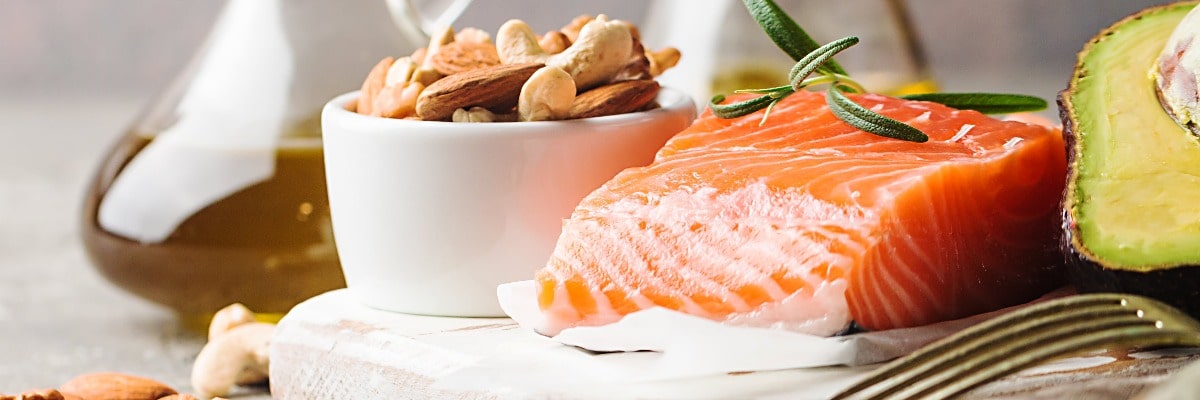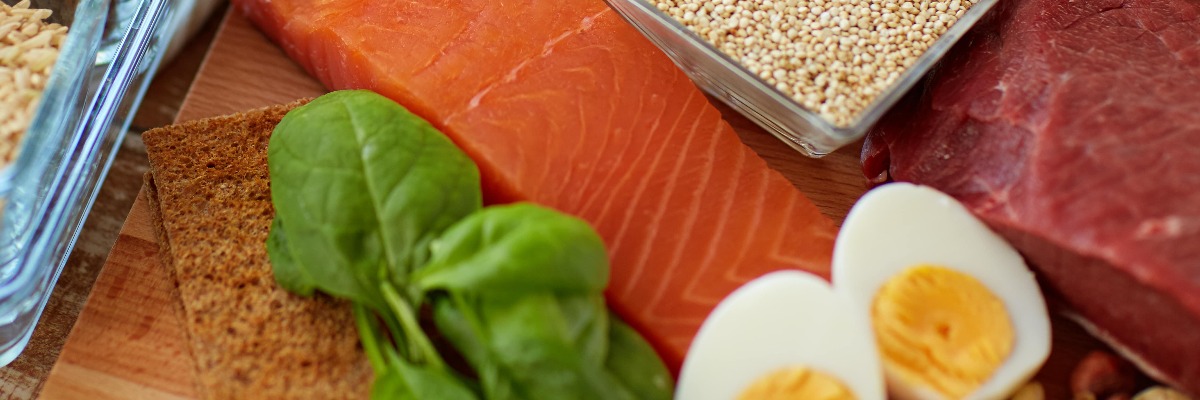Macronutrients can be quite a confusing topic for many people. In this article, we’ll cover the role macronutrients play in our diet, so you’re better equipped to make informed choices about the food you eat.
What are your macronutrients?
The three main macronutrients are: fats, proteins, and carbohydrates. Our body breaks down these foods to provide energy, or calories. Macros also serve a lot of other vital functions in our bodies too. ‘Macro’ means large, so these nutrients are required in large amounts. This is the opposite to micronutrients, like vitamins and minerals that are equally important for maintaining optimal health, but we need them in much smaller quantities.
Fat is the macronutrient that provides the most energy.
Here’s a calorie comparison:
Carbs: 4 calories per 1g
Protein: 4 calories per 1g
Fat: 9 calories per 1g
On the whole, most foods contain a combination of macronutrients, rather than being only fat, protein or carbs. For example, half a can of kidney beans is made up of a bit of protein (9.2g), mainly carbs (13.5g) and a small amount of fat (0.6g).
Let’s look into each macronutrient in more detail now…
Carbohydrates: are you bready for this?

Carbs are either simple or complex. Where possible, you should opt for complex carbs over simple ones. They’re richer in fibre and minerals – they keep you feeling fuller for longer and don’t tend to spike blood sugar levels. This wonder macronutrient can also promote good gut health and may help manage cholesterol levels – just as long as you stick to the complex ones.
We’ll try not to make it complicated, here are some key complex carbs:
- Fresh, whole fruit
- Vegetables
- Legumes, e.g. beans and chickpeas
- Wholegrains
- Sweet potatoes
Simple carbs are the ones to avoid, including refined flour, cakes, biscuits, sweets, sweetened soft drinks and fruit juices. Yes! Even the breakfast staple orange juice can cause a glucose crash.
A note on Glycaemic Index and Glycaemic Load
When you talk about carbs, you might hear phrases thrown around like Glycaemic Index (GI). The term GI refers to the effect that a food containing carbohydrates has on resting blood glucose levels. Generally, the simple carbs we talked about just now are higher on the GI scale like white bread, basmati rice and sugar. These carbs quickly turn to glucose, causing your blood sugar to rise then plummet. But rather surprisingly, healthier options such as carrots and pineapple actually have very high GI scores. What’s happening there?
Before you start chucking out all your delicious fruits and veggies, it’s best to consider something called Glycaemic Load (GL). It’s basically another tool for weight and blood sugar level management that might be a bit more helpful than GI. It takes into account the total carb content of a food, giving a much more accurate picture of the overall effect that food has on your resting blood sugar levels. To learn more about how to effectively manage your blood sugar, take a look at our article that compares GI and GL foods.
Chewing the fat

Fats are divided into:
1. saturated (including animal fats, dairy, butter and from tropical sources, such as palm oil and coconut oil) and
2. mono- and polyunsaturated fats (for example, extra virgin olive oil, cold pressed rapeseed oil, cold water fish, avocadoes, seeds and nuts).
Unsaturated fats are a crucial part of a healthy balanced diet as they help regulate metabolism, improve blood flow, and promote cell health. They’re a source of essential fatty acids, which the body can’t make itself and helps us absorb vitamins A, D, E and K.
The research on saturated fats is inconclusive. Different types of saturated fats may have different health outcomes but further research is needed. A growing number of experts are now saying that there’s little evidence heathy, nutrient-dense saturated fats are responsible for obesity and poor health. Indeed, there’s an expanding body of evidence to demonstrate the advantages of extra virgin olive oil and nuts on cholesterol and cardiovascular disease risk. Whilst a universal consensus on saturated fats isn’t yet established, moderate amounts of unprocessed saturated fats can from part of a healthy diet.
There’s also industrial trans fats, which includes commercially baked, fried and processed foods, and some margarines. Trans fats are a real ‘no-no’ for your health. Avoid anything labelled with ‘partially hydrogenated vegetable oil’ which might be in margarine, spreads, cakes and biscuits too.
Knowing your DNA
The amount of carbs and fats you should consume varies from person to person, so it’s hard to say how much of your diet should be made up of carbohydrates. For instance, your activity levels and genetics play a part in how much you need. Knowing your DNA could help you to know how well your body metabolises carbohydrates and certain types of fat, so you can find the right macronutrient balance for you.
Become a pro at proteins

A protein is made up of linked chains of amino acids – you’ve got a total of 20 different amino acids in the body. They’re split into essential and non-essential amino acids. As the human body isn’t able to produce enough essential amino acids, you have to make sure your diet provides enough of this food group.
A source of protein can sometimes be categorised into either complete or incomplete. That indicates whether they’ve got enough of each 9 essential amino acids. By eating a varied number of foods throughout the day, you should be getting enough – but it’s worth paying attention to good complete protein sources.
Complete sources of protein include:
- Red meat
- Poultry
- Fish
- Eggs
- Dairy
- Soybeans
- Quinoa
Other foods which are high in protein (but don’t contain all nine essential amino acids) include other grains and nuts.
But what do proteins actually do? They carry out a wide range of functions in the body, acting as a hormone, enzyme and an antibody in the immune system. As if it hadn’t already done enough, it also makes up certain bodily structures, like connective tissue, skin, hair, and muscle fibre. Phew! Busy protein. But protein isn’t a direct source of energy, it works more like a building block for other structures in the body.
Like carbs and fats, the amount of protein you need depends on your body composition and your health or fitness goals. Protein requirements vary, but a general rule of thumb is 1g of protein per 1kg of healthy body weight per day. If you want to build muscle mass, you can increase your protein intake to see better results.
A cooked chicken breast or salmon fillet contains 26g of protein and 1 large egg provides 6g of protein. For veggies and vegans, ½ cup of beans contains 8g of protein and ½ cup of cooked quinoa provides 4g of complete protein.
Take control of your nutrients
Understanding more about nutrients in your diet, is key to making healthier decisions that are right for you and help you feel more well. If you want to know more about what nutrients your body needs, discover our DNA tests and get tailored recommendations on what foods to include in your diet.
Reviewed by:
Anna Keeble MA BA Wellbeing Expert
Dr Claire Marie Thomas MRCGP DFSRH DTMH DipNLP MBChB BMedSci Medical Expert
- Ander BP, Dupasquier CM, Prociuk MA, et al. (2003) Polyunsaturated fatty acids and their effects on cardiovascular disease. Exp Clin Cardiol. 8: 164-72 (PMID: 19649216).
- Burani J and Longo P J (2006) Low-Glycemic Index Carbohydrates The Diabetes Educator 32: 78–88 (doi: 10.1177/0145721705284743).
- Islam A, Amin MN, Siqqiqui SA, et al. (2019) Trans fatty acids and lipid profile: A serious risk factor to cardiovascular disease, cancer and diabetes. Diabetes and Metabolic Syndrome: Clinical Research and Reviews 13: 1643-1647 (doi: 10.1016/j.dsx.2019.03.033).
- Perna M and Hewlings S (2023) Saturated Fatty Acid Chain Length and Risk of Cardiovascular Disease: A Systematic Review. Nutrients 15 (doi: 10.3390/nu15010030).
- Taylor V (2022) What are macronutrients? Heart Matters, British Heart Foundation.
- Valk R, Hammill J and Grip J (2022) Saturated fat: villain and bogeyman in the development of cardiovascular disease? European Journal of Preventive Cardiology 29: 2312–2321 (doi: 10.1093/eurjpc/zwac194).
- Youness RA, Dawoud A, EITahawy O, et al. (2022) Fat-soluble vitamins: updated review of their role and orchestration in human nutrition throughout life cycle with sex differences. Nutrition & Metabolism 19: 60 (doi: 10.1186/s12986-022-00696-y).
- Zhu Y, Bo Y and Liu Y (2019) Dietary total fat, fatty acids intake, and risk of cardiovascular disease: a dose-response meta-analysis of cohort studies. Lipids in Health and Disease 18: 91 (doi: 10.1186/s12944-019-1035-2).





